Lighted Materials: Types, Applications, and Technology Advancements
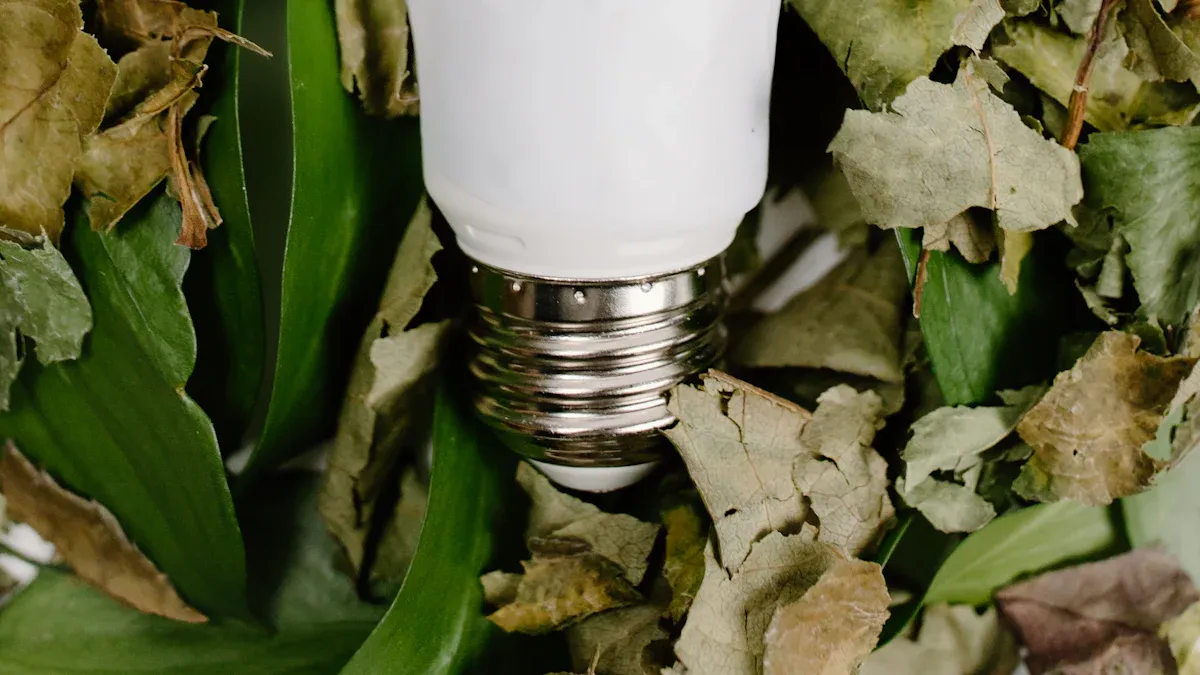
Lighted materials add light to things and surfaces. This changes how you see and use places. These materials use new technology, like LED. They make designs brighter and safer. They also help save energy. The lighting market was $151.7 billion in 2024. It may grow to $223.3 billion by 2030.
The table below explains why many industries pick LED technology:
Advantage | Description |
|---|---|
Energy Efficiency | LEDs use much less energy than old lamps. This saves money. |
Durability | LEDs last longer. They work well in hard conditions. |
Safety | Better light helps people see. It lowers risks. |
Adoption Projection | By 2025, most new industrial sites will use advanced LED lighting. |
You can see how these materials change daily life. They help industries move forward.
Key Takeaways
Lighted materials, like LEDs, use less energy and last longer than old lights. This helps save money and is better for the environment.
There are different types of lighted materials. Electroluminescent and photoluminescent types have special uses. They are used for things like safety signs and fashion.
New LED technology makes lights work better. It gives more colors and can connect to smart devices. This makes lights easier to use and more useful.
Lighted materials help keep people safe in public places. Glow-in-the-dark exit signs help people see during emergencies.
New trends in lighted materials bring cool new ideas. Flexible displays and eco-friendly designs will change how we use lights in the future.
What Are Lighted Materials
Definition and Features
Lighted materials are found in many places today. They use new technology to shine or glow. You can see them in signs, displays, and clothes. LED is often used to make bright colors and lights. These materials help you see better and make places look modern.
Some things make these materials special. They are not heavy, so they are easy to use. They cool down fast because they move heat away. You can bend and shape them in many ways. They do not rust or get ruined by water or chemicals. This helps them last a long time outside.
Characteristic | Description |
|---|---|
Low Density | These materials are light and good when weight matters. |
High Thermal Conductivity | They cool off quickly and do not get too hot. |
Excellent Electrical Conductivity | They carry electricity well, which is good for lights and displays. |
Malleability and Ductility | You can bend and shape them for different uses. |
Corrosion Resistance | They do not rust or break down, even outside. |
Lighted materials let you make new designs and help keep places safe.
Comparison with Traditional Materials
You might wonder how lighted materials are different from old ones. Old lights, like incandescent or fluorescent bulbs, use more energy. LED in lighted materials saves energy and lasts longer. You can make many shapes and designs with these materials. Old materials are heavy and hard to bend.
The table below shows the main differences:
Feature | Lighted Materials (LEDs) | Traditional Materials (Incandescent/Fluorescent) |
|---|---|---|
Energy Efficiency | Saves energy and money. | Uses more energy. |
Longevity | Lasts a long time. | Needs to be replaced more often. |
Flexibility in Design | Can fit many shapes and styles. | Hard to bend and less flexible. |
Directionality | Shines light where you want it. | Spreads light everywhere and wastes energy. |
Quality Variability | Quality keeps getting better. | Quality stays the same and is less efficient. |
Heat Management | Stays cool with special features. | Gets hot and needs extra cooling. |
You get better results and more choices with lighted materials. LED lights make places brighter and save energy. This new technology changes how you use light every day.
Types of Lighted Materials
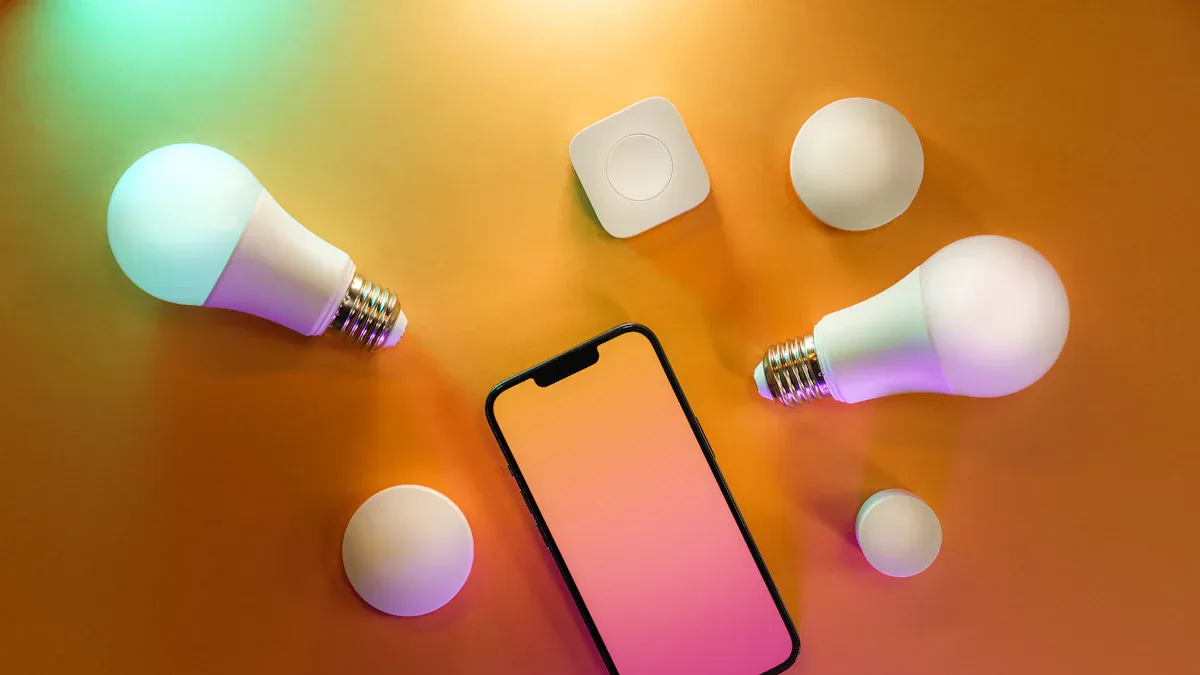
Lighted materials come in many shapes and sizes. Each kind uses its own way to make things glow. You can find these materials in signs, displays, cars, and clothes. Here are the main types and how they work.
Electroluminescent Materials
Electroluminescent materials shine when electricity is added. They are found in thin panels, wires, and paints. These materials can be powders or thin films. They turn electricity into light you can see. You see them in dashboards, night lights, and flexible screens.
Electroluminescent materials help make flat displays and indicator lamps. They can show many colors and shapes.
Unique Properties | |
|---|---|
Light emission when electricity is used | Used in light-emitting diodes (LEDs) |
Turns electricity into light | Used in flat-screen displays (OLEDs) |
Not the same as fluorescence | Used in many lighting technologies |
Can be powders or thin films | Used in indicator lamps and color displays |
These materials are used in many industries. They help people use light in new ways.
Photoluminescent Materials
Photoluminescent materials soak up light and glow later. You see them in glow-in-the-dark signs and exit paths. They store energy from sunlight or lamps and let it out slowly.
Very bright glow
Can change how they shine
Stay stable for a long time
Used in anti-counterfeiting, bioimaging, and diagnostics
Advantages | Limitations |
|---|---|
Absorbs lots of light | Only part of the device works as a converter |
Costs less because of simple parts | Hard to adjust solar cell stripes and contacts |
Very bright glow | Not great at trapping light |
Can change how they shine | Not fully flexible |
Stay stable for a long time | Only small efficiency gain |
Photoluminescent materials are good for safety signs and effects. They do not need wires or batteries to glow. Some problems are low absorption and keeping the material stable.
LED Materials
LED materials have changed how we use light. LEDs use semiconductors to make light with electricity. You see LEDs in car lights, streetlights, TVs, and plant lamps.
Type | |
|---|---|
LED | Car lights, home lights, electronics, farming, more |
Components | Phosphor, Epitaxy, Semiconductors, Wafer, more |
LEDs last a long time and use less energy than old bulbs. They come in many colors and sizes. You can use them almost anywhere.
Type of Bulb | Watts per Bulb | Cost per Bulb | KWh Used over 25,000 hours | Total Cost for 25,000 hours | |
|---|---|---|---|---|---|
LED | 25,000 hours | 8.5 | $5 | 212.5 | $26.25 |
CFL | 10,000 hours | 14 | $2 | 350 | $40 |
Incandescent | 1,200 hours | 60 | $1 | 1500 | $171 |
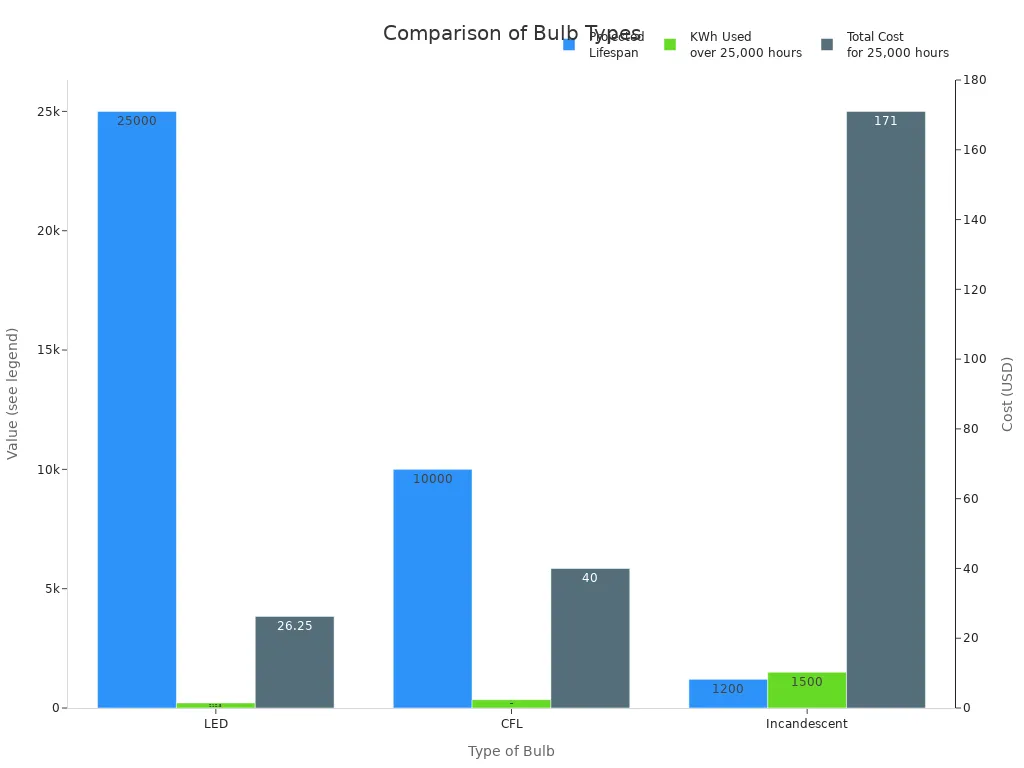
LEDs save money and energy. They help the environment by using less power.
Fiber Optic Materials
Fiber optic materials use thin glass or plastic fibers to move light. You see fiber optics in star ceilings, lamps, and medical tools.
One light source can power many points.
You only need to change one bulb for many lights.
Fiber optics carry light, not electricity.
Fiber optic lighting works well in hard-to-reach places or for special effects. You can use them in pools, museums, and cars.
OLED Materials
OLED means Organic Light Emitting Diode. OLED materials use organic compounds to make light. You see OLEDs in phone screens, TVs, and flexible displays.
Feature | OLED Materials | Other Lighted Materials |
|---|---|---|
Flexibility | Very thin, bendable, rollable | Usually stiff and not bendable |
Display Quality | Deep blacks, bright colors, wide angles | Less contrast and color range |
OLEDs can bend and roll. They show bright colors and deep blacks. You get wide viewing angles and thin screens with OLEDs.
Type | Description |
|---|---|
Substrates | Base layer for OLED devices |
Encapsulation | Keeps OLED safe from water and damage |
Anode | Sends electricity to the light layer |
Cathode | Completes the circuit in OLEDs |
Emissive Layer (EML) | Where light is made in OLEDs |
Electron Transport Layer (ETL) | Helps electrons move to EML |
Hole Injection Layer (HIL) | Helps holes move to EML |
OLED materials help make screens that are thin, light, and bendable.
MicroLED and Flexible OLED
MicroLED and flexible OLED are the newest lighted materials. MicroLED uses tiny LEDs for bright, sharp images. Flexible OLED uses special materials so screens can bend and fold.
New science has made these types possible.
Advancement | |
|---|---|
Eutectic Bonding | Makes manufacturing better and more reliable. |
PAM Driving Mode | Makes circuits simpler and improves efficiency. |
Native RGB vs Color Conversion | Native RGB helps with heat and brightness. |
Cost Structure | Lower costs help more people use these screens. |
Transparent Displays | MicroLEDs are brighter and clearer but have some problems. |
Flexible OLED and MicroLED displays use new materials like polyimide and thin glass.
New ways help put tiny LED parts on bendable surfaces.
Special covers keep screens safe from water and air.
Stretchy materials and new bonds help screens work when bent.
Flexible displays are growing fast. OLED is popular now, but MicroLED may be used more soon.
You can see foldable phones, rollable TVs, and bright screens because of these new materials. These changes show how science and technology make lighting better for everyone.
Applications of Lighted Materials
Lighted materials have changed how many things work. You see them in buildings, cars, and clothes. These materials use LED technology to make places safer and brighter. They also help save energy. Let’s look at where you find these materials.
Architecture and Interior Design
Modern buildings and homes use lighted materials. Architects use them to change how rooms feel. LED lights help save energy and make new designs. You see hidden lights in walls and ceilings. Downlights and uplights show off special parts of a room. LED strips run along floors and stairs to guide people.
Application of Lighted Materials | Description |
|---|---|
Interaction of light and materials | Materials change how much light you see and how a room feels. |
Use of color and finish | Light colors and shiny surfaces bounce more light and make rooms brighter. |
Architectural lighting techniques | Hidden lights, downlights, and uplights make rooms look cool and show off materials. |
Case study: Casa Batllo | Gaudi used tiles to change how light looks in his building. |
Hidden lights in walls and ceilings
Downlights and uplights for special spots
LED strips on floors and stairs
Floor lights make materials easy to see
Energy-saving lights make rooms bright without using lots of power. LED lights let you pick colors and brightness with smart controls. This gives you more ways to style your space.
Automotive and Transportation
Cars, trains, and planes use lighted materials. LED lights make headlights and taillights last longer. They use less energy. Some fancy cars use OLED panels that bend into new shapes. Matrix beam systems help you drive safely at night. They control light so you do not blind other drivers.
Technology | Impact on Automotive Lighting |
|---|---|
LED | Saves energy, lasts longer, makes cool light patterns, helps electric cars use less power. |
OLED | Thin, bendy panels for smooth designs, used more in fancy and regular cars. |
Matrix Beam | Smart lights that help you see at night and keep other drivers safe. |
Laser | Shines farther and brighter than LEDs, good for fast cars, may be used more soon. |
Digital Lighting | Shows symbols and warnings, helps keep self-driving cars safe. |
Interior Lighting | Lets you pick colors inside your car and makes it easier to use. |
LED lights are used in dashboards and inside cars. These systems use less energy and give you more control. You get better safety and can see better with these new lights.
Fashion and Wearables
Clothes and accessories use lighted materials too. Smart textiles glow without regular LEDs. Some clothes soak up sunlight and glow at night. This helps you stay safe when you walk or run outside. Color-changing materials let you switch your look with a button.
Smart textiles use special compounds to glow.
Solar-powered clothes shine at night so people see you.
Color-changing materials switch colors and patterns fast.
Sports clothes use glowing fabrics for safety at night.
Wearable lights help people who cannot see well.
Fancy clothes change with the environment.
Special generators make energy from moving fabric.
Stretchy batteries power wearable lights.
Light devices can be printed on clothes.
These new ideas make fashion safer and more fun. LED lights in wearables help you save energy and stay seen.
Safety and Emergency Signage
Lighted materials help keep people safe in buildings and public places. Photoluminescent exit signs glow in the dark. They soak up light during the day and shine when the power goes out. This helps you find your way in emergencies. These signs do not need wires or batteries, so they work even if the power fails.
Lighted materials in emergency signs make places safer. You can see exit paths even when it is dark. This helps you get out fast and safely.
Energy-saving lights matter in safety signs. LED signs last longer and use less power.
Consumer Electronics
Phones, tablets, and computers use lighted materials every day. Dead front overlays make devices look simple when off and light up when on. You see glowing logos on things like RAM trucks. This makes them stand out and look cool. Backlit overlays help you see buttons and logos better.
Dead front overlays look simple and light up clearly.
Backlit overlays give even light for buttons.
Glowing materials make devices shine.
LED lights in electronics help save energy and make things look better. These lights make devices easier to use and more stylish.
Advertising and Signage
Signs and billboards use lighted materials to get attention. Bright signs help brands get noticed, even at night. Studies show these signs help people remember brands and buy more. They work all the time, so people see them a lot.
Bright lights make signs easy to see from far away and in different light.
Good lighting makes signs easy to read and can make people feel something.
Well-lit signs help keep public places safe by guiding people.
Bright signs help brands get noticed and sell more.
Signs work all the time to help with advertising.
LED lights in signs use less energy and last longer. Energy-saving lights help businesses spend less and reach more people.
Lighted materials are used in many places. You see them in buildings, cars, clothes, safety signs, electronics, and ads. LED lights help save energy and make places safer and brighter. These new ideas keep changing how you live and work.
LED Technology Advancements
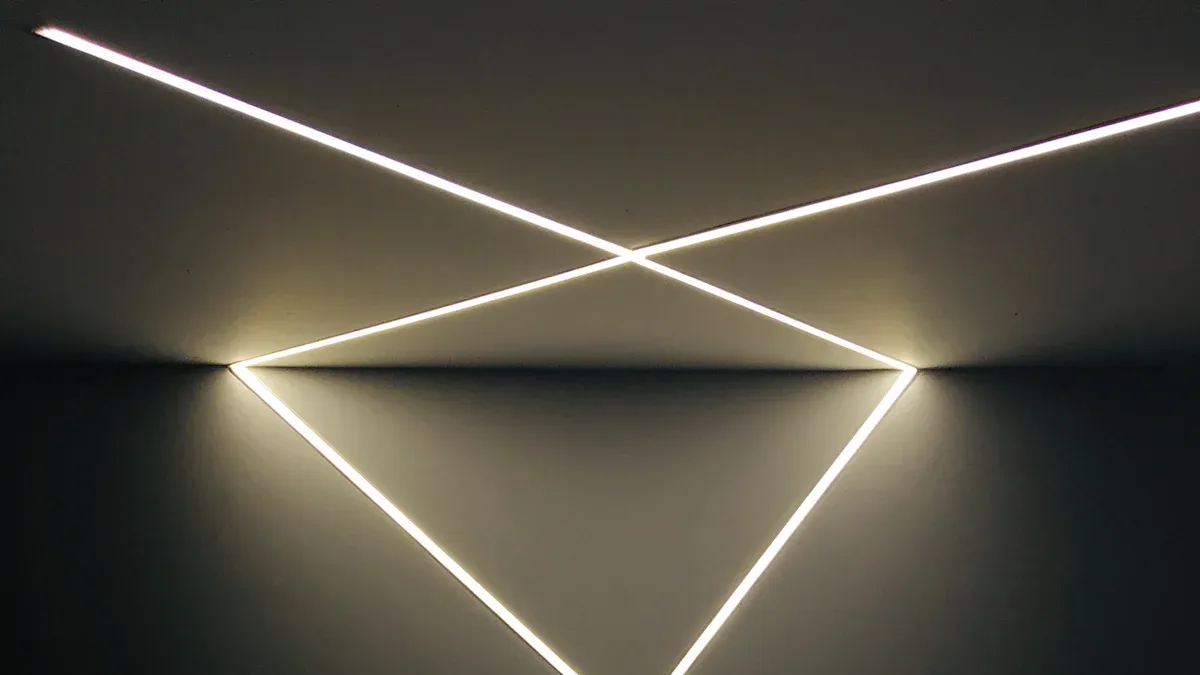
Efficiency and Energy Savings
LED technology has changed how we use lights. New LEDs can make up to 210 lumens for each watt. This means you get more light but use less energy. If you pick LED bulbs instead of old ones, you save money and help the earth. The table below shows how LEDs work better than other bulbs.
Lighting Technology | Efficiency (lumen/watt) | Energy Savings Compared to Incandescent |
|---|---|---|
Incandescent | ~10 | N/A |
Compact Fluorescent | ~50 | 50% |
Standard LED | ~110 | 90% |
Ultra-Efficient LED | 210 | 90% |
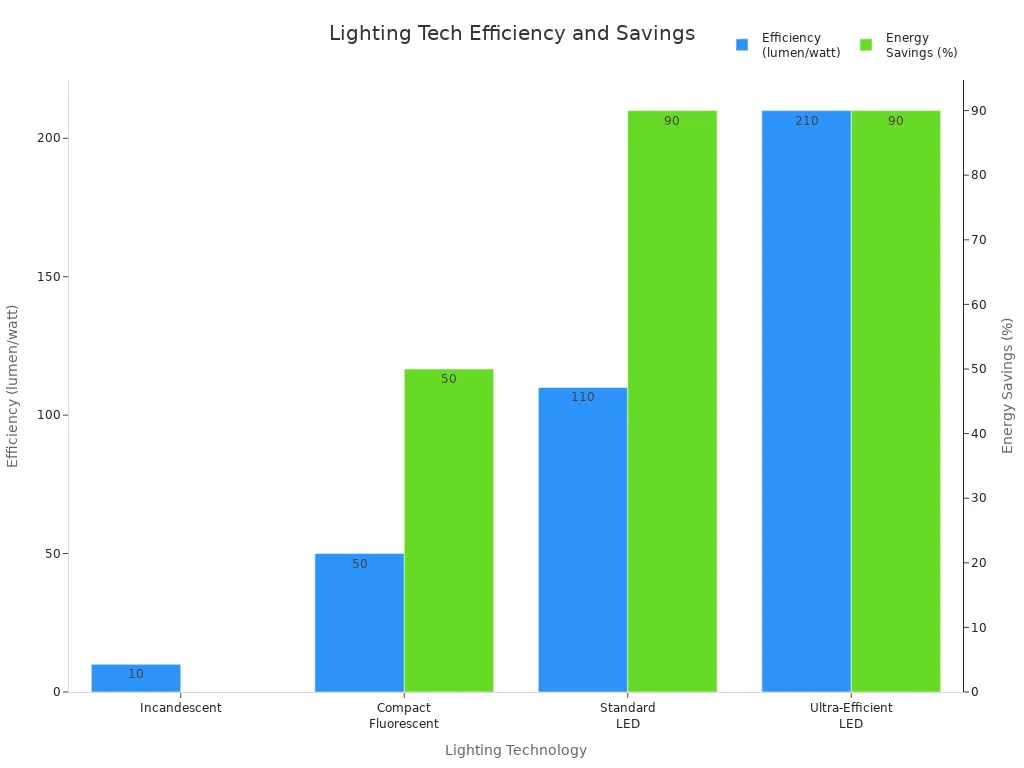
You can use networked controls and wireless LED retrofits. These systems let lights change by themselves. This helps stop wasting energy. Green-made LED products use less energy to build and make less pollution.
Color Range and Stability
LEDs now give you many colors to choose from. You can pick red, green, or blue diodes to make almost any color. You can mix colors for better displays. You can also change the color temperature from cool to warm. New LEDs keep colors steady, so your lights always look the same.
Green: 495-570nm
Blue: 450-490nm
Steady color control helps set the right mood at home or work.
Lifespan and Durability
LED bulbs last much longer than old bulbs. One LED bulb can shine for up to 100,000 hours. If you use it 8 hours a day, it can last about 34 years. If you use it less, it lasts even longer. Old bulbs burn out fast, but LEDs just get dimmer slowly. This makes them safer and more dependable for homes and businesses.
LED bulbs do not break easily.
They handle bumps and shakes better than glass bulbs.
Home LEDs give you years of steady light.
Smart Integration
Smart features make LEDs even better. You can use sensors to turn lights on or off when someone enters or leaves. Energy tracking shows you how much power you use. These smart tools help you save more energy.
Technology | Description | Energy Savings |
|---|---|---|
Lights change based on motion, so you waste less. | Up to 60% less energy | |
Energy Tracking Systems | Shows real-time power use for better management. | Helps you manage energy |
You can control your lights with your phone or voice. This makes your home or office smarter and easier to use.
Sustainability Innovations
LEDs keep getting better for the planet. Makers use less material and try to recycle old LED bulbs. New types like microLEDs and organic LEDs use fewer resources and work better. Some companies use renewable energy to make LEDs. New recycling methods, like pyrolysis and bioleaching, help get metals back from old bulbs. These steps help protect the earth and make lighting safer for everyone.
When you pick lighted materials and LED products, you help make the world cleaner.
Future Trends in Lighted Materials
Emerging Materials
New materials will change how you use light soon. Scientists are always looking for better ways to use lighting. They want lights to be more efficient and flexible. Some new materials are very exciting:
Kubos Semiconductors is making cubic GaN technology. This can make red microLEDs twice as efficient. Displays will be brighter and work better.
Princeton scientists are making perovskite-based LEDs. These can make very flat, tiny crystal films. Devices will use less energy and work better.
These new ideas mean you will get better colors. Your lights will last longer. You will have more choices for your lights.
Industry Impact
New lighting technology will change many industries. You will see big changes in how companies use light and energy. The table below shows how different industries will benefit:
Industry | Impact |
|---|---|
Automotive | New lighting helps drivers see better and stay safe. It is good for electric cars. |
Construction | Smart lighting saves energy and helps the environment. |
Consumer Electronics | Eco-friendly designs are better for people and help make new products. |
Cars will use new lights to keep people safe. Electric cars will use these lights too. Buildings will use smart lighting to save energy and help the planet. Electronics will have eco-friendly designs and cool new features. Factories will use smart lighting to keep workers safe and save money.
Challenges and Opportunities
There are some problems with new lighted materials. Many old buildings have old lights that do not work with new LED lighting. Changing to new lights can cost a lot at first. But you will save money and energy later. Training workers to use new lights is important. This is true for factories and emergency places. If you get ready, you can use new lighting to make places safer and better.
Tip: Keep learning about new lighting trends. This helps you pick the best lights for your home, business, or factory.
You have learned that lighted materials come in many kinds. Some are photothermal nanomaterials, and others are advanced LEDs. These materials help save energy at home and at work. You can see them in lights for stores, in medical treatments, and in making power. New LED changes help you save more, see better colors, and use smart tools.
Keep learning about lighting trends. New smart systems, AI, and AR will help you save more and change how you use light.
Industry Change | Impact |
|---|---|
Commercial lighting | Saves more energy, smart controls, easy to upgrade |
Commercial spaces | Feels more comfortable, costs less, new looks |
Lighted materials will change many industries in the future.
FAQ
What makes lighted materials safer than traditional lighting?
You get safer lighting because LEDs do not get as hot as old bulbs. They lower the risk of burns or fires. Many lighted materials also use strong, shatter-resistant parts. This helps protect you and your space.
Can you save money by switching to LED lighted materials?
Yes! You use less electricity with LEDs. They last much longer than old bulbs. You spend less on replacements and energy bills. Over time, you keep more money in your pocket.
Are flexible lighted materials easy to install?
You can install flexible lighted materials in many places. They bend around corners and fit odd shapes. You do not need special tools for most projects. This makes them a good choice for creative designs.
What new trends should you watch for in lighted materials?
Look for smart lighting, bendable screens, and eco-friendly materials. Companies keep making lights that use less energy and last longer. You will see more smart features and better colors in the future.
See Also
Exploring Acrylic Light Panels: Varieties, Uses, and Setup
Understanding Acrylic LED Light Boxes: Varieties and Setup
Acrylic Light Boxes: Uses, Advantages, and Choosing Guide

